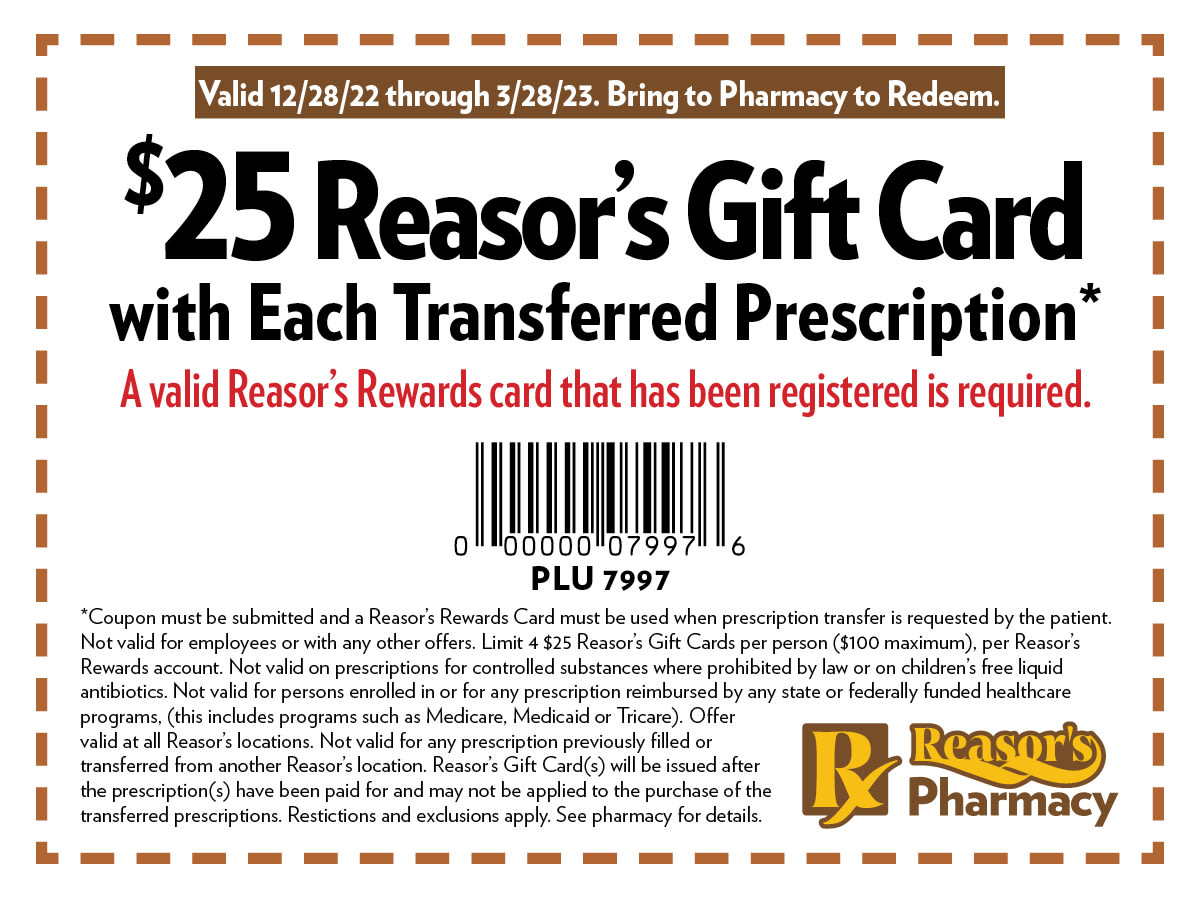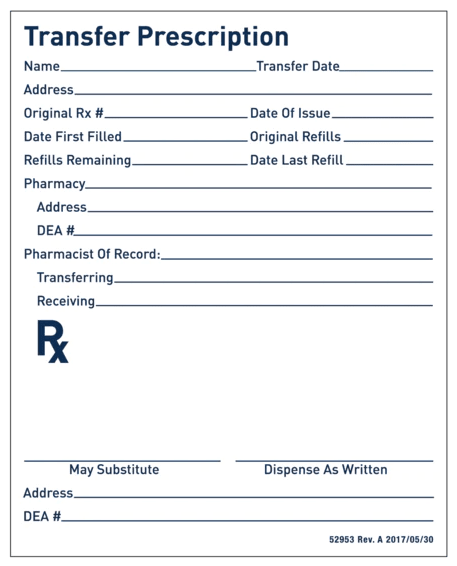Table of Contents
I. Understanding Prescription Transfers
II. Reasons for Transferring Prescriptions
III. How to Transfer a Prescription
When you’re taking prescription drugs, convenient access to a pharmacy you trust is absolutely paramount. One question many patients have as they navigate pharmacy interactions is: Can you transfer a prescription from one pharmacy to another?
The short answer is yes. Transferring a prescription is a fairly common procedure. Whether due to relocation, seeking better prices, or desiring more convenience, understanding how prescription transfers work is essential to maintaining uninterrupted access to medication.
This detailed guide explores the reasons behind most prescription transfers, outlines the specific action steps required to execute a transfer, and covers the importance of clear communication between patients, providers, and pharmacies to ensure a smooth transition.
Quick Takeaways:
- Common reasons for prescription transfers from one pharmacy to another include relocation, convenience, cost and insurance coverage, service quality, and personal preference.
- Some pharmacies encourage transfers to their locations using cost incentive programs.
- Patients initiate transfers, but pharmacies and providers communicate directly to complete them.
- It’s up to the patient to confirm the transfer has been completed, including any information needed to access refills in the future.
Understanding Prescription Transfers
A prescription transfer happens when a patient moves their prescription from one pharmacy to another. It’s commonly done when a patient prefers to fill their medication at a different location for reasons such as convenience, cost, availability, or relocation to a new area.
The process requires transferring prescription information and authorization from the original pharmacy to the new one, ensuring that the patient’s medication regimen continues without interruption.
To initiate a transfer, the patient typically needs to provide the new pharmacy with their personal information, the prescription details, and the contact information of the original pharmacy. The new pharmacy then contacts the original pharmacy to request the transfer of the prescription.
Once the transfer is complete, the patient can begin picking up their prescription medication from the new location. It’s important to note that while most prescriptions can be transferred, certain drugs, especially controlled substances, often have specific restrictions or additional requirements based on state and federal regulations.
To understand prescription transfers thoroughly, let’s take a closer look at the specific steps involved in the process.
Reasons for Transferring Prescriptions
Patients need to transfer their prescriptions for a variety of reasons, each aiming to align their medication management with changing circumstances or preferences. Some key reasons include:
Relocation
One of the most common reasons for transferring a prescription is moving to a new location. Whether due to a residential move, travel, or a temporary change of address, patients need their medications to be accessible where they currently reside.
Convenience
Convenience plays a significant role in pharmacy choice. Patients may switch to a pharmacy that is closer to home, work, or along their daily commute. Some may prefer pharmacies that offer additional services such as home delivery or drive-through pickup.
Still others may prefer to transition to an online pharmacy, through which the prescription and refill ordering process can be completed digitally on any connected device.
Cost and Insurance Changes
The cost of medication can vary between pharmacies. Patients might transfer their prescriptions to take advantage of lower prices, better insurance coverage, or discount programs available at a different pharmacy. Some pharmacies even offer dedicated incentive programs for transferring prescriptions, like the one shown on the coupon below.
The level of care and services provided by a pharmacy can influence the decision to transfer prescriptions. Patients may seek pharmacies with specialized services, better customer care, a wider range of products, or more expertise in a specific health area. Pharmacies with more convenient hours, such as those open on weekends, late hours, or 24/7, are often preferred by patients with busy schedules. Accessibility for people with disabilities or mobility limitations might also be a consideration. Personal experiences and recommendations from physicians, family, or friends can also prompt a prescription transfer. Patients might switch to a pharmacy where they feel more comfortable with the staff or trust the pharmacists’ expertise more. No matter what the reason behind transferring a prescription, it’s important for patients, providers, and pharmacists to follow the right procedures in order to ensure continuity, safety, and privacy. In the next section, we’ll walk through the right steps for executing a successful transfer. Transferring a prescription is a straightforward process, but it requires specific steps to be followed for a smooth transition. Both the patient and the pharmacists play crucial roles in this process. The process begins with the patient choosing a new pharmacy and providing them with necessary details. This includes the patient's name, date of birth, the prescription medication they wish to transfer, and the contact information of the current pharmacy where the prescription is filled. The patient may also need to provide additional information, such as their address, phone number, insurance details, and any allergies or medical conditions the new pharmacy should be aware of. The new pharmacy will contact the original pharmacy to request the transfer. This is typically done over the phone and involves verifying the prescription and patient details. Many pharmacies use a transfer form like the one shown below (either a hard copy or a digital version) to keep the transfer information organized and formalize the actual handoff of the prescription from one pharmacy to another. The original pharmacy verifies the prescription and patient information and then sends the prescription details to the new pharmacy. This should include all pertinent information about the medication, dosage, remaining refills, and the prescribing doctor’s information. Once the new pharmacy receives the prescription information, they input it into their system. The patient is then notified that their prescription is ready for pickup or delivery, as per their preference. The patient should ensure that the new pharmacy has the correct number of refills. If refills are needed, the new pharmacy might contact the prescribing physician. It’s a good practice for the patient to confirm that the transfer has been completed and the medication is ready at the new pharmacy. Throughout this process, communication and accuracy are key. Both pharmacies must adhere to privacy laws and regulations regarding patient information. For controlled substances, there may be additional regulations that need to be followed. The patient's proactive involvement and clear communication with both pharmacies can help ensure a seamless transfer. Understanding the process of transferring prescriptions is essential for effective medication management, ensuring seamless access to vital medications. By initiating transfers proactively, providing accurate information, and maintaining open communication with providers and pharmacies, patients can navigate prescription transfers efficiently, safeguarding their continuity of care and overall health. At My Drug Center, our customer service staff and team of licensed pharmacists can assist you with a quick and seamless prescription transfer. By ordering from My Drug Center, you can save up to 80% on your next prescription order. Contact us today to get started.
Pharmacy Services and Expertise
Pharmacy Accessibility and Hours
Personal Preferences or Recommendations
How to Transfer a Prescription
1. Patient Initiates the Transfer
2. New Pharmacy Contacts the Original Pharmacy

3. Verification and Transfer
4. Finalize the Transfer
5. Confirm Refills
6. Patient Confirmation
Final Thoughts
